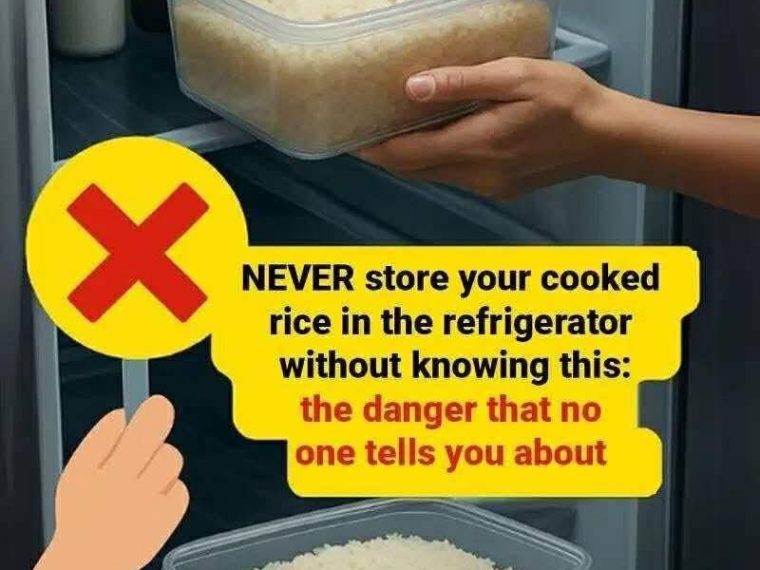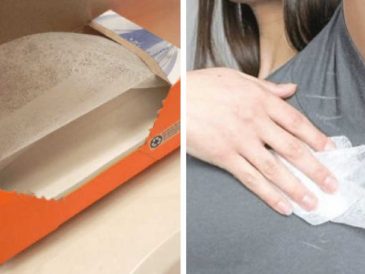You’ve just enjoyed a delicious meal of rice and plan to store the leftovers for later. Sounds harmless, right? Not so fast.
Improperly storing cooked rice can turn your leftovers into a health hazard. What most people don’t realize is that rice—unlike many other cooked foods—can become dangerous if not handled properly. It’s one of the leading causes of foodborne illness globally, especially in households that underestimate its microbial risks.
This isn’t fearmongering—it’s food safety science. Let’s dig into why cooked rice can go bad quickly, the hidden dangers you should watch out for, and how to store it safely to avoid serious consequences.
The Hidden Threat in Rice: Bacillus cereus
Raw rice naturally contains spores of a bacterium called Bacillus cereus. These spores can survive the cooking process, and if rice is left sitting out at room temperature for too long, the spores can germinate and multiply, producing toxins that cause food poisoning.
Unlike many bacteria, Bacillus cereus produces heat-resistant toxins, meaning reheating the rice won’t make it safe once it’s been contaminated.
🚨 Symptoms of Bacillus cereus food poisoning:
- Nausea
- Vomiting
- Abdominal cramps
- Diarrhea
Symptoms can appear within 1 to 5 hours after eating the rice and typically last about 24 hours—but in some cases, they can be more severe.
The Critical Time Window
The golden rule of rice storage: don’t leave cooked rice out for more than 1 hour—2 hours max in cooler environments. After that, bacteria begin to multiply rapidly.
Once rice cools to room temperature and stays there, the moist, starchy environment becomes a perfect breeding ground for bacteria.
❄️ Safe Storage Basics
To prevent rice from becoming toxic, you must cool and store it properly—and fast.
✅ Here’s what you should do:
- Cool Quickly: Spread rice out on a clean, shallow tray or baking sheet to allow it to cool rapidly. Avoid piling it in a deep container, where the inside stays warm for too long.
- Refrigerate Promptly: Transfer cooled rice to an airtight container and refrigerate within 1 hour.
- Use Within 1–3 Days: Eat refrigerated rice within three days max to ensure safety.
- Reheat Thoroughly: When you reheat rice, make sure it’s piping hot (above 165°F or 74°C) all the way through. Don’t reheat more than once.
Can You Freeze Cooked Rice?
Absolutely. In fact, freezing is one of the best ways to preserve cooked rice for longer periods without sacrificing safety or texture.
🥶 How to freeze rice properly:
- Cool rice quickly, as mentioned earlier.
- Portion it into airtight, freezer-safe containers or zip-top bags.
- Label with the date.
- Freeze for up to 1 month for best quality (though it can last up to 3 months).
When you’re ready to eat it, you can:
- Microwave it straight from the freezer.
- Steam it or warm it in a pan with a bit of water.
How Do You Know Rice Has Gone Bad?
Rice doesn’t always smell off when it goes bad—so visual and olfactory cues aren’t always reliable.
Signs your rice is no longer safe:
- Sour or funky odor
- Slimy or mushy texture
- Discoloration (yellowing or mold spots)
- Crusty or dry patches (from fridge drying out uncovered rice)
When in doubt, throw it out. Reheating bad rice won’t kill the toxins.
Rice Safety Myths—Busted
❌ Myth 1: “If it’s cold, it’s safe.”
Bacteria can survive and even grow slowly in the fridge. Refrigeration slows down bacterial activity—it doesn’t eliminate it.
❌ Myth 2: “I’ve always left rice out and never got sick.”
Just because you haven’t had symptoms doesn’t mean it’s safe. Toxins might build up over time, and your body might not always react immediately—or you might attribute mild symptoms to something else.
❌ Myth 3: “Microwaving kills everything.”
Microwaves may not heat rice evenly, leaving cold spots where bacteria survive. And remember—Bacillus cereus toxins are heat-stable.
👨👩👧👦 The Family Risk Factor
Children, the elderly, and people with weakened immune systems are more vulnerable to foodborne illnesses. If you’re cooking for family or storing rice for meal prep, safe handling becomes even more important.
✅ The Final Checklist for Safe Rice Storage
🔹 Cool cooked rice within 1 hour
🔹 Store in a shallow, sealed container
🔹 Refrigerate up to 3 days or freeze up to 1 month
🔹 Reheat thoroughly (steaming hot)
🔹 Never reheat more than once
🔹 When in doubt, throw it out
Rice is a dietary staple for billions—but it’s also one of the most deceptively risky leftovers. Handle it with care, and you’ll enjoy its benefits without ever worrying about an unexpected trip to the bathroom (or worse).





